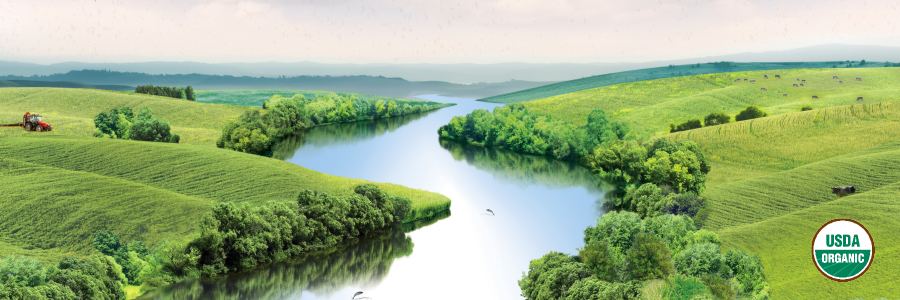


Sign-up for {N}power to get exclusive discounts, newsletters, members-only features, and more!

"To make all of America's waters fishable and swimmable again … and to eliminate all pollution" was the stated goal of the Clean Water Act, passed by Congress in 1972.1
Fifty years later, how are our waterways faring? One of our largest rivers, the Mississippi, has been named one of "America's Most Endangered Rivers®” of 2022. Its chief threats are pollution and habitat loss.2 3 And across the U.S., 50 percent of river and stream miles, assessed in a report from the Environmental Integrity Project (EIP), are so polluted they're classified as "impaired," which means they are not considered safe for one or more public uses, including swimming, fishing, or drinking.4 So… what do the favorite foods of summer grilling season have to do with contaminated water?
“The failure to confront agriculture … is probably the biggest program failure in the Clean Water Act.” —Eric Schaeffer, executive director of EIP5
Although water pollution has many contributors, the Clean Water Act contained a glaring loophole from the get-go, and agricultural runoff has been flowing through it ever since.6 The law defines pollutants in two broad categories: point source and non-point source. Non-point sources include rain or snowmelt, which the EPA does not regulate. Point sources of pollution include discharge coming from an identifiable source like a factory or sewage plant, and includes pipes, ditches, and tunnels from which pollution may be discharged; these are regulated by the EPA.7 8 The caveat lies in this: the Clean Water Act specifies that point source "does not include agricultural storm-water discharges and return flow from irrigated agriculture,” although they are sources of pollution into waterways.9 10 11

Let’s take a look at Iowa, a state that plays a starring role in producing many a summer barbecue's main courses, and where more than 85 percent of the land is farmed.12 As the country’s top producer of pork and corn, a crop accounting for more than 95 percent of feed-grain in the U.S., Iowa agriculture contributes to the making of burgers, ribs, and wings nationwide.13 14 Yet, it's also "an epicenter of environmental contamination like no other state in the country, with water being the primary conduit," reports journalist Charlie Hope-D'Anieri, speaking to David Cwiertny, director of the University of Iowa's Center for Health Effects of Environmental Contamination.15 According to the EIP report, 93 percent of the state's assessed river and stream miles are impaired for swimming and recreation.16 In 2018, researchers from the University of Iowa analyzed the state's nitrate-nitrogen contribution to the Mississippi River stream network, and found that it was disproportionately high compared to its volume of water input. This research also confirms Iowa’s role as a significant contributor to the hypoxic “Dead Zone” that occurs in the Gulf of Mexico every summer after excess nutrients (like nitrogen) drain into it via the Mississippi, costing U.S. seafood and tourism industries roughly $82 million a year.17 18 19
Although crops require nitrogen to grow, an excess can be harmful to human health and aquatic life, and in addition to synthetic fertilizer, manure is another primary source of nitrate pollution.20 21 A recent study by the Environmental Working Group (EWG) found that concentrated animal feeding operations (CAFOs) in Iowa, mainly for hogs, have increased almost five-fold since 1990. These enterprises are estimated to generate around 68 billion pounds of manure per year which has nowhere to go, so it's frequently spread on nearby farm fields.22 23 And while CAFOs are considered "point source" polluters by the Clean Water Act, it's been left up to the states to enforce regulations. Civil Eats cites a 2019 analysis from the Natural Resources Defense Council that found permits or official data for more than half of CAFOs estimated to be operating nationwide do not exist.24
Still, you needn’t abstain from summer grilling season to help protect our water supply. Certified organic standards prohibit the use of synthetic nitrogen fertilizer and have strict guidelines and record-keeping requirements for manure use; organic farms also utilize practices like cover cropping, which has been shown to reduce water runoff.25 26 27 28 At Natural Grocers, our meat, dairy, and egg standards prioritize animal welfare and promote healthier soil and cleaner water—because every bite counts!29



Sign-up for {N}power to get exclusive discounts, newsletters, members-only features, and more!